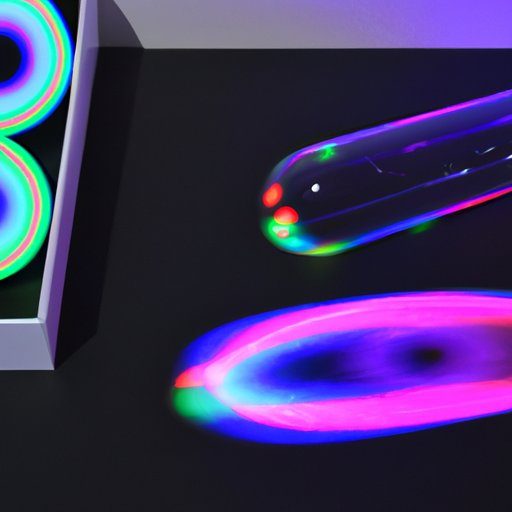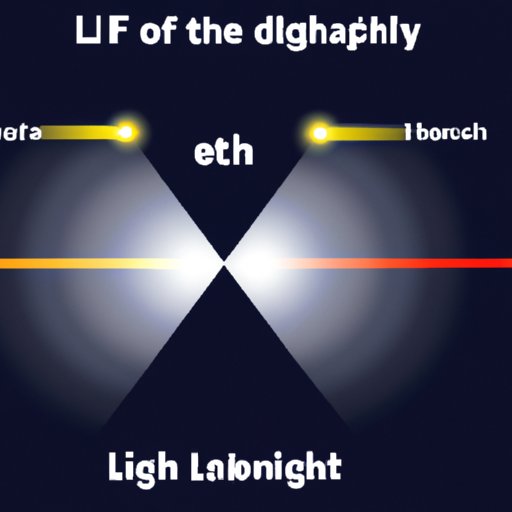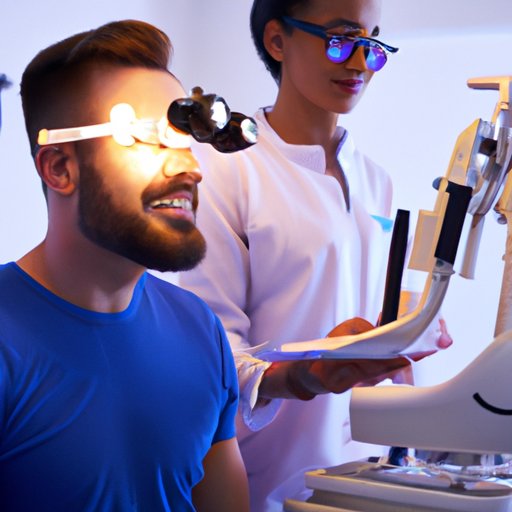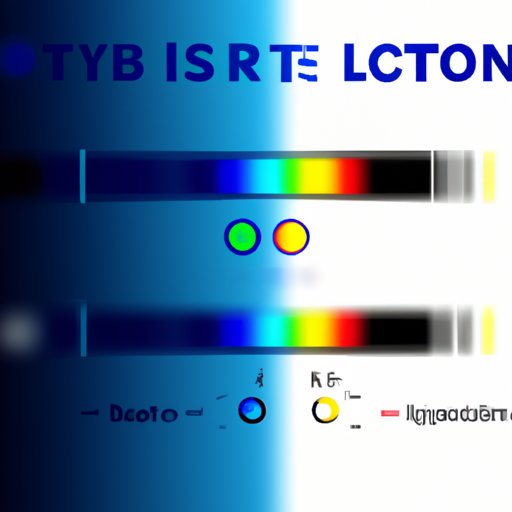Introduction
Light is a form of energy composed of electromagnetic waves that travel through space. The human eye is capable of detecting visible light, which is essential for our ability to see. The science of vision involves the physical and psychological processes that enable us to interpret visual stimuli. In this article, we will explore the various ways in which light affects the science of seeing.

Exploring the Physical Science of Light and Vision
The physical science of light and vision involves understanding the properties of light and its interaction with the eye. There are several different types of light, including ambient, diffuse, and specular. Ambient light is the most common type of light and comes from sources such as the sun and electric lights. Diffuse light is scattered in many directions by objects in its path. Specular light is reflected off of smooth surfaces in a single direction. All of these types of light can affect our ability to see.
The reflection and refraction of light are also important components of the physical science of light and vision. Reflection occurs when light bounces off of an object and enters the eye. Refraction occurs when light passes through a medium such as water or glass and bends at different angles. Both of these processes can affect the way we perceive light and ultimately our ability to see.
The properties of light can also have an impact on our vision. Light is composed of photons, which carry energy in the form of electromagnetic radiation. This radiation is absorbed by the retina, which then converts it into electrical signals that the brain can interpret. The intensity of light, or the amount of energy it carries, can affect the clarity of our vision.

How Different Types of Light Affect Our Ability to See
Different types of light can have different effects on our vision. Natural light sources such as the sun provide the majority of our light exposure. Sunlight is full-spectrum, meaning it contains all colors of the visible spectrum. This type of light is beneficial for our vision, as it helps us to distinguish colors and shapes more clearly.
Artificial lights, such as those found in homes and offices, usually contain a narrower range of colors than natural light. This can make it difficult to differentiate between colors and shapes. Additionally, the intensity of artificial lights can be much higher than natural light, which can cause eyestrain and fatigue.
Ultraviolet (UV) rays are another source of light that can affect our vision. UV rays are invisible to the human eye but can still damage the eyes if exposed to them for too long. Prolonged exposure to UV rays can lead to cataracts, macular degeneration, and other eye diseases.
Analyzing the Impact of Light on Human Sight
The intensity of light can have a major impact on our vision. Bright lights can cause eyestrain and fatigue, while dim lights can make it difficult to see clearly. Color temperature is another factor that can affect our vision. Lights with a cooler color temperature tend to be brighter, while lights with a warmer color temperature tend to be dimmer.
Glare is another effect of light on our vision. Glare is caused by bright light reflecting off of shiny surfaces and entering the eye. This can cause discomfort and difficulty in seeing clearly. Anti-glare lenses and filters can help reduce the effects of glare.

Examining the Effects of Bright Lights on Ocular Function
Bright lights can have a number of effects on ocular function. One of these is accommodation, which is the process by which the eyes adjust to focus on objects at different distances. Bright lights can cause the eyes to become over-accommodated, making it difficult to focus on close objects.
Pupil dilation is another ocular function that can be affected by bright lights. Pupils dilate in response to increased light intensity, allowing more light to enter the eye. This can cause blurred vision and difficulty seeing in low-light conditions.
Contrast sensitivity is the ability to distinguish between two colors or shades of light. Bright lights can decrease contrast sensitivity, making it more difficult to distinguish between colors or shades of light.
Investigating the Role of Light in Optometry
Optometry is the branch of medicine that deals with the diagnosis and treatment of vision problems. Light plays an important role in optometry, as it is used to test various aspects of vision. Visual acuity tests measure the clarity of vision by testing the ability to distinguish between different levels of brightness. Color blindness tests measure the ability to distinguish between different colors. These tests rely on the use of different levels of light to accurately assess vision.
Light also plays an important role in the diagnosis and treatment of visual impairments. By examining the effects of different levels of light on the eyes, optometrists can identify any underlying issues that may be causing vision problems. Treatment options such as eyeglasses, contact lenses, and surgery can then be recommended based on the results of the examination.
Conclusion
This article has explored the various ways in which light affects the science of seeing. We have seen that different types of light, such as natural and artificial, can have different effects on our vision. The intensity of light, color temperature, and glare can all have an impact on ocular function. Finally, we have examined the role of light in optometry and how it is used to diagnose and treat visual impairments.
In summary, light is an essential component of our ability to see. Its effects on vision can range from beneficial to detrimental, depending on the type and intensity of light. It is important to understand the effects of light on our vision in order to maintain good eye health and optimal visual performance.
(Note: Is this article not meeting your expectations? Do you have knowledge or insights to share? Unlock new opportunities and expand your reach by joining our authors team. Click Registration to join us and share your expertise with our readers.)
